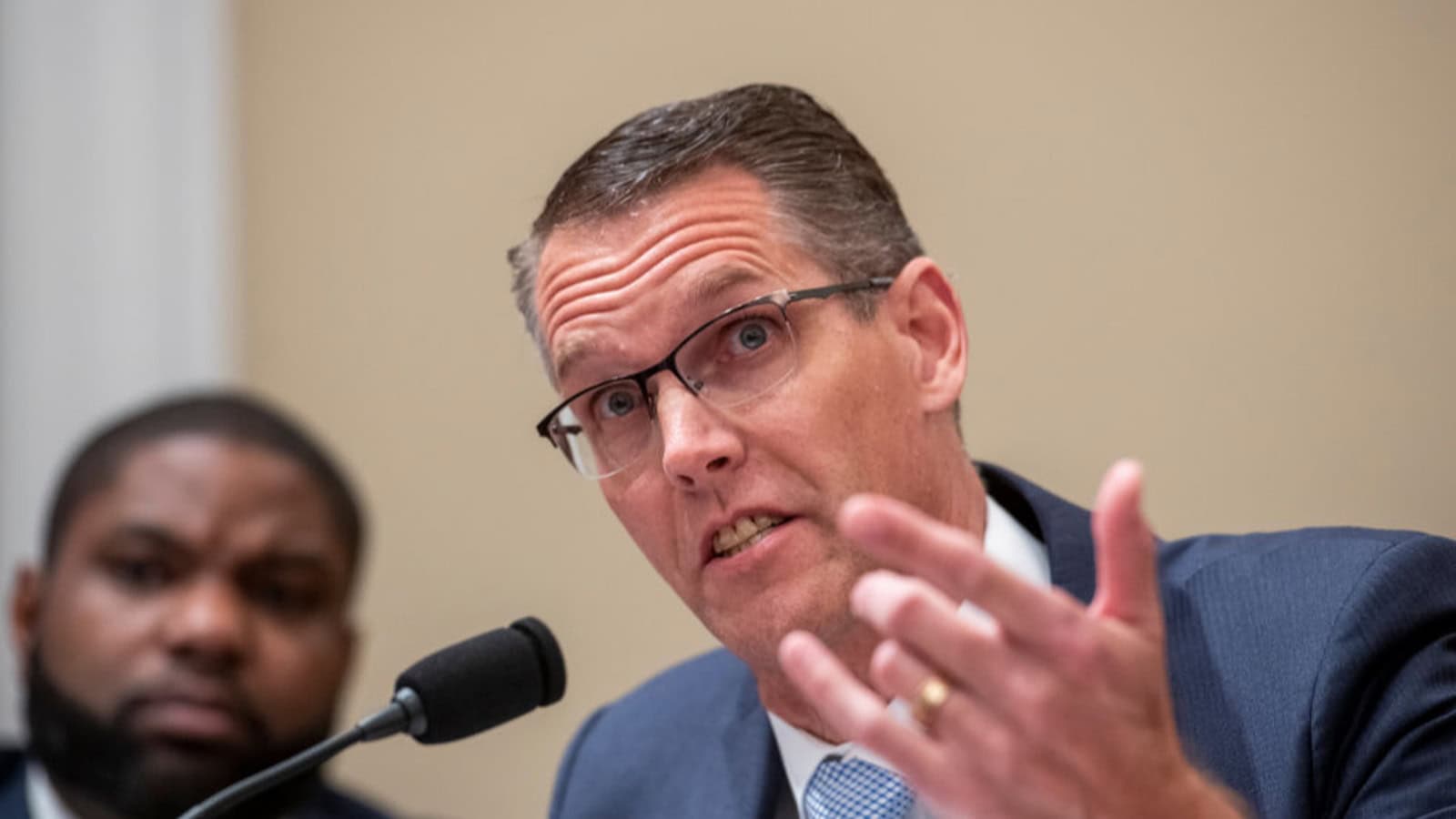Congressional Tax Writers Join NAM to Talk Tax Reform
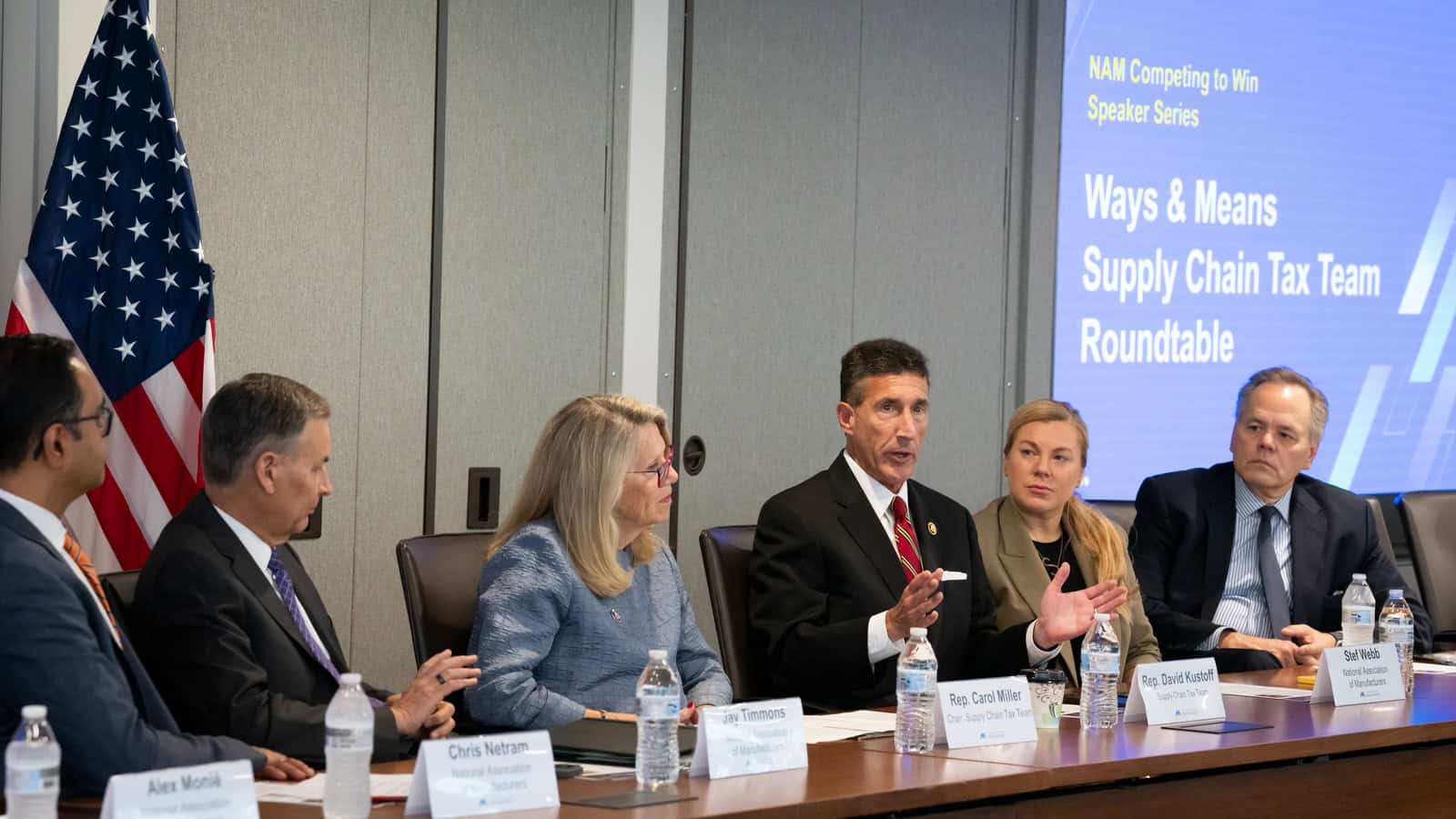
As part of its “Manufacturing Wins” campaign to preserve pro-manufacturing tax provisions, the NAM hosted a roundtable this week with Reps. Carol Miller (R-WV) and David Kustoff (R-TN)—respectively the chair and a member of the Ways and Means Committee Supply Chain Tax Team.
Preparing for 2025: The Supply Chain Tax Team has jurisdiction over the corporate income tax rate. Tax reform reduced the corporate rate to 21%, spurring the creation of thousands of new manufacturing jobs—and the NAM is working with Congress to ensure the U.S. maintains a competitive corporate rate as policymakers debate next year’s “tax Armageddon.”
Understanding the benefits: Rep. Miller emphasized that the dollars saved due to tax reform’s lower corporate rate have supported job creation, higher wages and the flourishing of local communities.
- As a business owner herself, she said she believes it’s important for members of Congress in charge of tax policy to understand the risks businesses take, the communities they support and the certainty they need to be successful.
Measuring the impact: Rep. Kustoff emphasized the importance of real-world data on the benefits of the lower corporate tax rate—from the number of jobs created to the work businesses have done to provide their employees with bonuses and higher wages.
- According to Rep. Kustoff, real-world metrics are important for educating policymakers about the need for action, as crucial, pro-manufacturing tax provisions are set to expire at the end of 2025.
Recognizing the ripples: The discussion also touched on the wider impact of tax increases on global supply chains and the broader U.S. economy.
- Participants noted that a higher corporate income tax rate’s ripple effects would hurt companies throughout the economy—even when those companies are pass-throughs and not explicitly affected by the corporate income tax rate.
- That’s because these small businesses often sell to and partner with larger corporations that would have less capital available under a higher corporate rate.
Our take: “Prior to 2017 tax reform, the U.S. had the highest corporate tax rate among the more than three dozen countries in the Organisation for Economic Cooperation and Development and the third highest in the entire world,” said NAM Vice President of Economic Policy Charles Crain.
- “That put manufacturers in America at an alarming disadvantage. A competitive tax rate helps business compete in the global economy, leads to job creation, investments and purchases of new equipment and allows manufacturers to give back to their communities.”
- “If Congress were to raise the corporate rate, it would force America to take a step back on the global stage—at a time when other countries around the world are implementing more competitive tax agendas.”
A Veteran and His Spouse Forge New Careers in Manufacturing
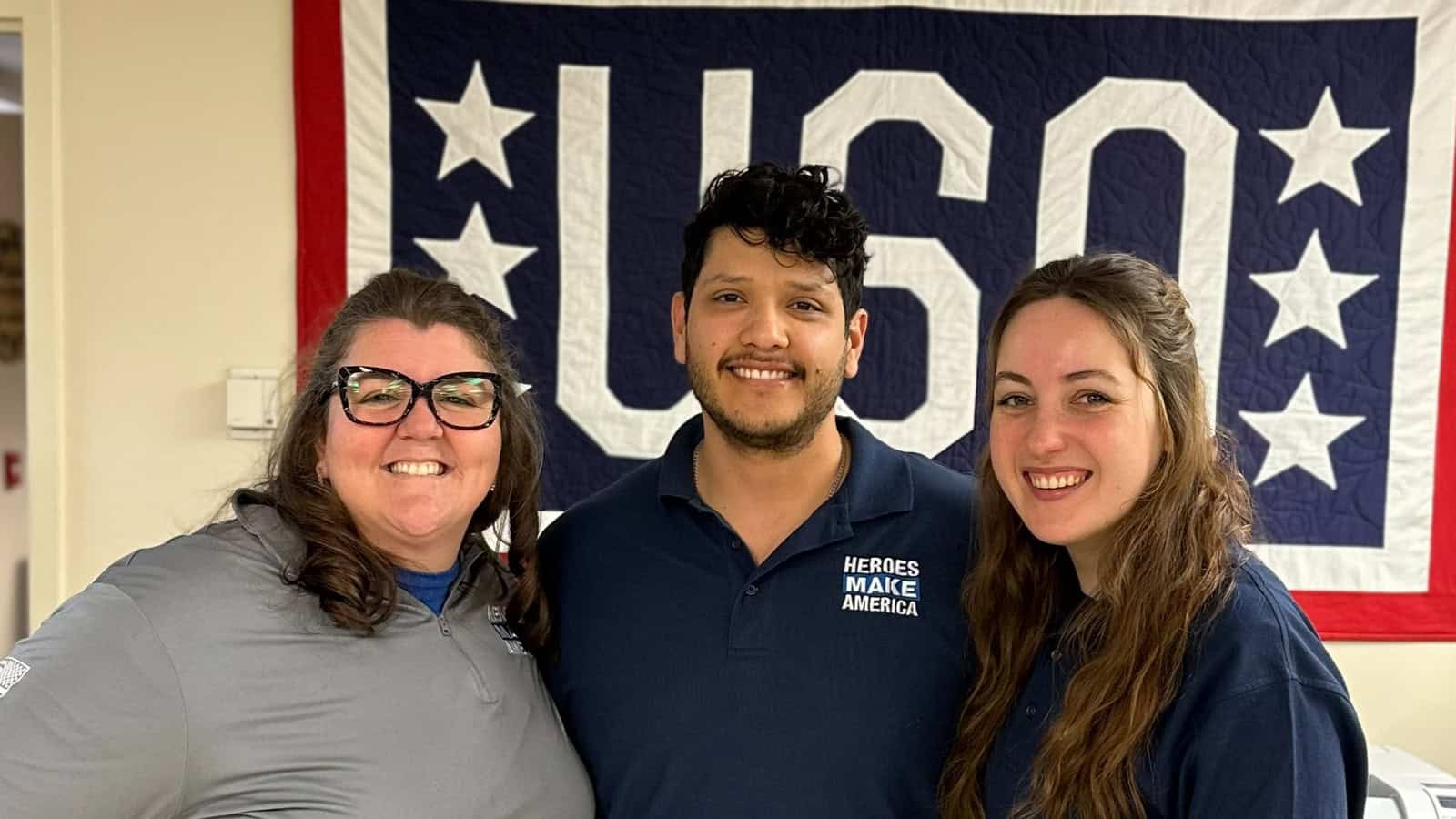
Finding a civilian job after serving in the military can be daunting. For former Army cavalry scout Jose Gallegos, the task was even more complicated because his spouse, Aleksandra Balinska-Gallegos, also needed a new position. Through Heroes MAKE America—a Manufacturing Institute program that builds connections between the military community and the manufacturing industry—both Gallegos and Balinska-Gallegos found rewarding roles in Pennsylvania with food and industrial manufacturer Cargill.
The program: Heroes MAKE America provides integrated certification and career-readiness training in partnership with local community colleges to prepare transitioning service members, veterans, National Guard members, reservists and military spouses for rewarding careers in the manufacturing and supply chain industries.
- “The program not only introduces you to the manufacturing world—it prepares you for everything that is around it,” said Balinska-Gallegos. “How to correctly write your resume, how to match a military background with civilian life, how to translate military vocabulary to civilian vocabulary. And from writing a resume to emailing with potential employers and preparing for interviews—it was a little bit of everything.”
The benefit: The program helped both spouses at the same time—a huge benefit for Gallegos, who was looking for opportunities in the civilian world, and for Balinska-Gallegos, who had arrived with Gallegos from Lithuania and was worried about navigating the U.S. job market.
- “I was a completely new fresh military spouse,” said Balinska-Gallegos. “When Jose told me that there was an opportunity not only for him to go to the manufacturing program, but to also take his spouse—I was over the moon.”
Working nearby: Although they work in different plants—Gallegos as an operations and management associate at a meat production plant, and Balinska-Gallegos as an administrative assistant at a plant producing chocolate—their mentors at Heroes MAKE America helped ensure that the couple would work at the same company and in the same location.
- “He’s at a meat plant, and he loves beef. I’m at a chocolate plant, and I love chocolate,” said Balinska-Gallegos. “It’s perfect.”
Finding success: Although Gallegos’ work in the Army was very different from his role at Cargill, his supervisors have already noticed his leadership skills. While the approximately 60 other associates recruited this year are all college graduates, it’s Gallegos who has been called to take on bigger tasks.
- “After my first month, they started giving me supervisor responsibilities,” said Gallegos. “I’m shadowing managers and superintendents so I can learn from them, so … I can be in different areas of the plant.”
The last word: “I would have been very scared to start working in the U.S. without this kind of background, and I’m not sure what [Jose] would have done after leaving the Army if he didn’t go through the Heroes MAKE America program,” said Balinska-Gallegos. “That course prepared us immensely for this new life.”
Learn more: Find out more about Heroes MAKE America and the Manufacturing Institute, the workforce development and education affiliate of the NAM, here.
Photo: Jose Gallegos and Aleksandra Balinska-Gallegos with MI Director of Heroes Program Execution Rachelle Wolford (left).
Mapping the Impact of a Port Strike
To lower drug prices, Congress should undertake comprehensive reform of pharmacy benefit managers, not embrace price controls, the NAM told the Senate Tuesday. What’s going on: “Biopharmaceutical manufacturers are a critical part of the manufacturing economy,” NAM Vice President of Domestic Policy Charles Crain said ahead of a Senate Finance Committee hearing on health care costs. Threats to innovation: Instead of benefiting patients, “the IRA pricing mandates announced last month by the Department of Health and Human Services will … limit the capital manufacturers have available to put toward the astronomically high costs of developing a new medicine,” Crain told the committee, adding that the uncertainty introduced by price controls is also likely to dissuade early-stage investment in new treatments. PBM reform: To truly lower health care costs, Congress must rein in PBMs, Crain said. The NAM has called on Congress to adopt specific PBM reforms, including: The last word: “Instead of further embracing price controls, it is imperative that Congress act to lower drug prices by reining in PBMs’ problematic business practices and minimizing their ability to further damage the U.S. health care system,” Crain said. Pharmaceuticals manufacturers are increasingly turning to radioactive drugs in their battle against cancers (CNBC). What’s going on: Eli Lily, Bristol Myers Squibb and others “have spent some $10 billion on deals to acquire or work with radiopharmaceuticals makers,” which produce drugs containing radioactive isotopes, predicting that the technology will be effective in treating multiple cancer types. How it works: Radiopharmaceutical “drugs work by attaching radioactive material to a targeting molecule that searches for and attaches to a specific marker on cancer cells. The trick is finding markers that exist on cancer cells but not healthy cells. That can allow the treatment to deliver radiation to cancer cells and spare the rest of the body from the level of damage that comes with many cancer drugs.” More interest: Though radiopharmaceuticals have been around since the 1940s, they’ve only begun drawing big interest in recent years. In-house production: Among the key criteria in Lilly’s search for a firm to acquire: “whether companies were prepared to manufacture the drugs,” according to Eli Lilly Executive Vice President and President of Lilly Oncology Jacob Van Naarden. Safety and speed are everything: Each dose of Novartis’ Pluvicto has a GPS tracker to make sure it goes to the correct patient at the correct time, said Victor Bulto, president of the U.S. unit for Novartis. That’s because the therapies are only good for a few days once made. Special considerations: Radiopharmaceuticals come with unique challenges. Big opportunity: Though full understanding of radiopharmaceuticals’ potential may be years away, “[i]f we can be successful in expanding the target and tumor type repertoire, this could be a very big class of medicines,” Van Naarden said. The search for alternatives to chemicals called PFAS has been going on for years. Recently, materials design company Techmer PM created one—a new chemical for use in polymer processing. The new solution: Last year, the Clinton, Tennessee–based manufacturer introduced the HiTerra T5—a polymer processing aid that helps maintain film surface smoothness and die-lip buildup—which replaces traditional chemistry based on per- and polyfluoroalkyl substances. Why it’s critical: In March, the EPA issued the first federal reporting limits and guidelines for tracking the use of PFAS in manufacturing, along with other PFAS-related regulations. Individual states are also imposing their own restrictions on PFAS chemicals. More replacement efforts: Techmer PM is working closely with its customers to come up with additional PFAS alternatives, McHenry said. Unrealistic timelines: While the firm is hard at work developing potential replacements, the stringent deadlines that the EPA has set for the reporting and potential elimination is damaging, McHenry told us. The long view: For many applications, dependable alternatives will likely be found at some point, McHenry concluded. Rep. Yakym (at right) visits the shop floor of Kountry Wood Products in Nappanee, Indiana. For Rep. Rudy Yakym (R-IN), Indiana’s 2nd Congressional District isn’t just a place on the map—it’s the beating heart of America’s manufacturing sector. It’s a district he proudly refers to as the “manufacturing capital of America.” Personal connection: Representing this district in the House of Representatives, the fourth-generation Hoosier who was born and raised in South Bend brings a personal connection to manufacturing that shapes his vision for the future of the industry and fiscal responsibility in the United States. This deep-rooted connection to manufacturing is more than just a talking point for Rep. Yakym—it’s a cornerstone of his identity and legislative agenda. Zoom out: Rep. Yakym’s commitment to manufacturing isn’t just lip service. He led a significant effort in the House of Representatives, rallying more than 140 Republican colleagues to support a tax package that would restore full R&D expensing, bonus depreciation and interest deductibility—key provisions of the NAM’s “Manufacturing Wins” campaign to preserve tax reform in its entirety. A collaborative spirit: Rep. Yakym’s dedication to bipartisanship is clear. He noted that if he had to choose a member of Congress of the opposing party he’d start a manufacturing company with, he didn’t hesitate to name Rep. Jimmy Panetta (D-CA). Rep. Yakym said they would produce RV components, an industry he knows well from his district, which includes Elkhart, the “RV Capital of the World.” The vision: Looking ahead, Rep. Yakym envisions a future where manufacturing continues to be a pillar of the American economy, especially in his district. He wants the next generation to understand that viable, rewarding career paths in manufacturing are right in their backyard. What’s next: As a congressman, Rep. Yakym’s primary goal is to restore fiscal responsibility in Washington. He sees this as essential not just for the country’s economic health, but also for national security. Only at the NAM: Shop Talk is a new series that aims to help you get to know the personal connections, insights and priorities of policymakers who impact our industry. Rep. Randy Feenstra (R-IA), the vice chair of the House Ways and Means Committee’s Rural America Tax Team, is working to shield family businesses across America from damaging tax burdens by targeting the estate tax for repeal. As part of the NAM’s “Manufacturing Wins” campaign, which aims to protect pro-manufacturing provisions from 2017 tax reform set to expire in 2025, the NAM spoke with Rep. Feenstra about his work and why it matters to manufacturers. Nixing the tax: Tax reform doubled the valuation threshold under which family-owned businesses’ assets are exempt from the estate tax. While Rep. Feenstra is working to prevent that increased threshold from expiring, he has a bigger goal in sight: repealing the estate tax altogether. Listening to owners: Rep. Feenstra and his colleagues on the tax team have spoken to family businesses across the country, including manufacturers. These conversations have made it clear that “we still have a lot of work to do to provide relief from what can be a devastating setback for multigenerational family businesses,” he said. Persecuting small business: As Rep. Feenstra explains, the estate tax often threatens to destroy small manufacturers, whose value is often tied up in illiquid assets like equipment and facilities. If tax reform expires… Rep. Feenstra warns that if tax reform’s estate tax changes expire, many additional smaller businesses will suffer. The last word: “As we go into 2025, we need to be focused on policies that support growth and help [family-owned] businesses succeed, not create costly obstacles for them to overcome,” Rep. Feenstra concluded. Learn more: You can read our full Q&A with Rep. Feenstra here and learn more about the NAM’s “Manufacturing Wins” tax campaign at NAM.org/MfgWins. The NAM recently interviewed Rep. Randy Feenstra (R-IA), the vice chair of the House Ways and Means Committee’s Rural America Tax Team, about the estate tax and why he’s working with colleagues on Capitol Hill to repeal it. NAM: Rep. Feenstra, Congress is facing a “Tax Armageddon” next year, as crucial provisions from 2017’s Tax Cuts and Jobs Act are set to expire. As a member of the Ways and Means Committee, what is your focus moving into next year’s debate? Rep. Feenstra: One of those crucial provisions from the Tax Cuts and Jobs Act that is set to expire is the doubling of the estate tax exemption amount, which currently sits at $13.6 million in 2024. After 2025, it will return to half that amount, adjusted for inflation. That change in the Tax Cuts and Jobs Act was another important step toward full repeal of the estate tax, which my Death Tax Repeal Act would do. The bill makes the simple recognition that death should not be a taxable event. When a family is grieving, the federal government sends a multimillion-dollar tax bill as condolences. This is simply wrong. I’m proud to co-chair the Rural America Tax Team, which has dug into this issue of the “death tax” and the impact it is having on family businesses across the country. As the tax team has spoken to family businesses and estate tax experts from across the country, it’s become increasingly clear that we still have a lot of work to do to provide relief from what can be a devastating setback for multigenerational family businesses. Repealing this tax is going to be one of my top priorities in 2025, and I’m proud to have the support of 170 of my colleagues. NAM: The estate tax is imposed on family-owned businesses when ownership of the business passes to the next generation following the death of an owner. As you mentioned, the TCJA doubled the exemption threshold, excluding more assets from taxation and thus reducing the burden of the estate tax on businesses. Why is this important and what is Congress doing to preserve this higher threshold? Rep. Feenstra: Over the years, various bills have taken steps toward providing relief for taxpayers hit by the death tax. The Tax Cuts and Jobs Act was one of the largest expansions of that relief, significantly reducing the number of family businesses hit by the tax and reducing the tax burden for those businesses that still are. People often don’t realize that businesses over many generations can accumulate assets that can put them over the asset threshold, but that doesn’t mean these businesses have a lot of cash on hand. So when they’re hit with millions in new taxes, that can sink an already cash-strapped business. Fortunately, because of the doubling of the exemption amount, far fewer businesses face that threat. As long as any family business does face that threat, we still have work to do. NAM: At the end of 2025, the estate tax is scheduled to be reduced by half, subjecting more of family-owned manufacturers’ assets to taxation and increasing their estate tax liability. As the Ways and Means Committee and tax teams continue meeting with businesses around the country, what are you hearing on the impact this change would have? Rep. Feenstra: Two things: A lot more people would be hit by the death tax, and the people who are hit would be paying a much higher tax. These are small family businesses we are talking about, and if the current exemption amount is allowed to return to half its current value, that means the size of the businesses getting hit are much smaller than they are today. People often think of farms, and that’s certainly true, but as you know, manufacturers are hit, family-owned restaurants, auto dealers, you name it. As we go into 2025, we need to be focused on policies that support growth and help these businesses succeed, not create costly obstacles for them to overcome. If the exemption amount falls to its pre–Tax Cuts and Jobs Act level, that’s a lot of new businesses that are going to be hit by this tax.An Interactive Map of East and Gulf Coast Ports
NAM: Lower Costs Through PBM Reform, Not Price Controls

Drug Makers Invest in Radiopharmaceuticals

Techmer PM Offers Safe Alternatives to PFAS for Manufacturers
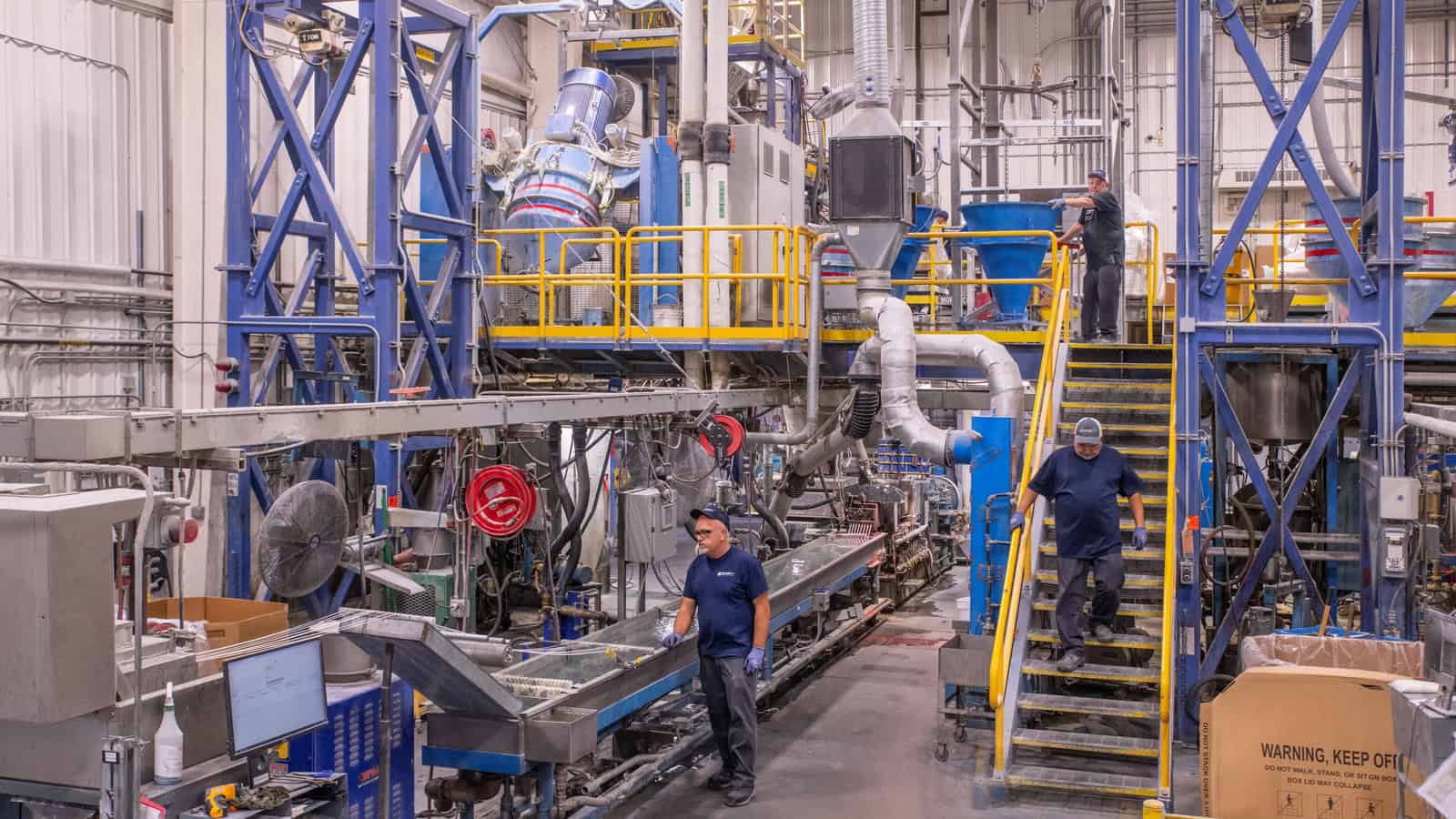
NAM Shop Talk Series: Meet Rep. Rudy Yakym
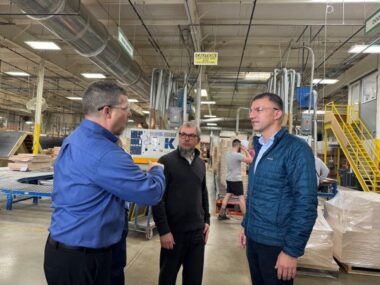
Rep. Feenstra Works to Repeal Estate Tax
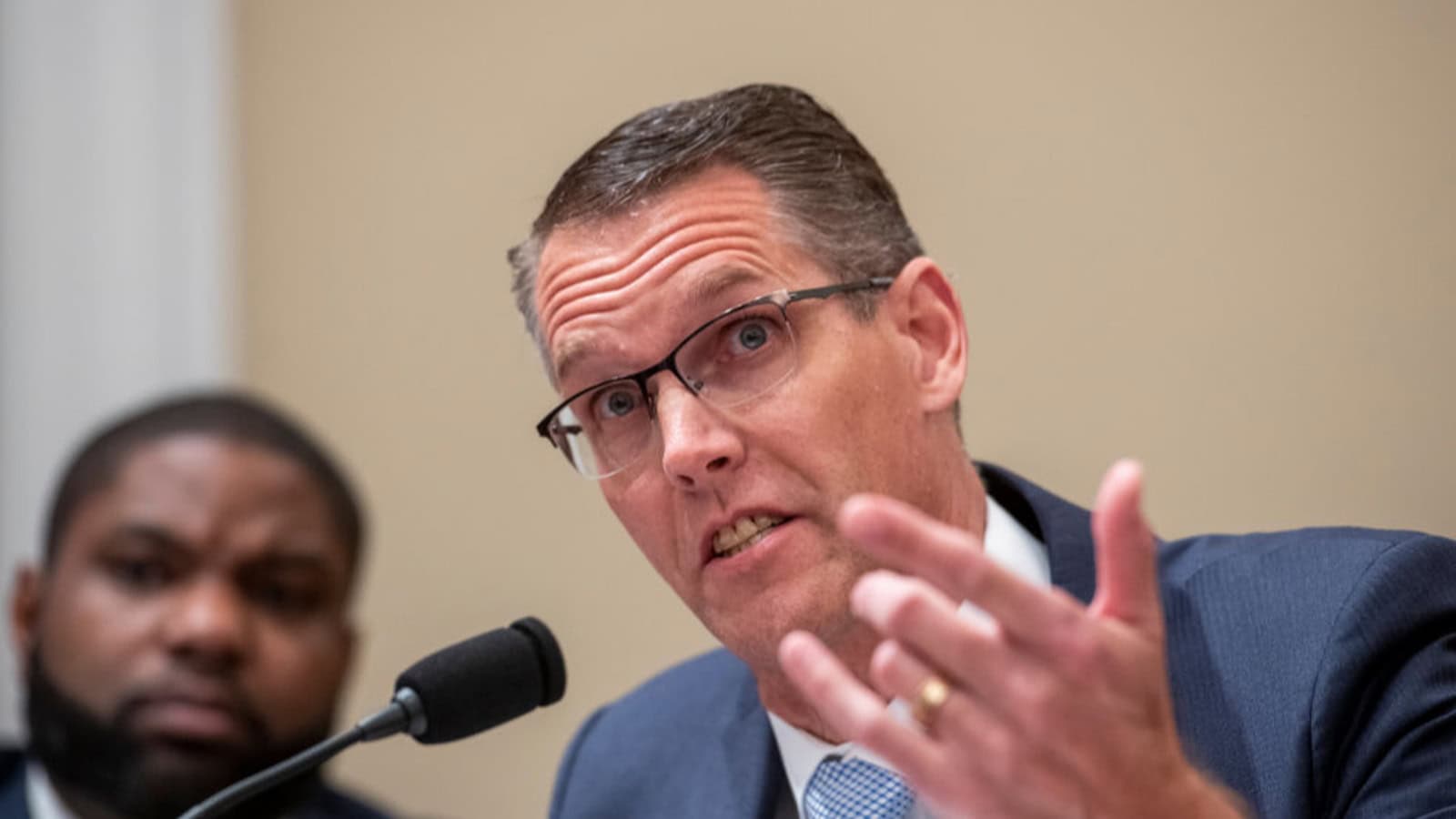
Estate Tax: A Q&A with Rep. Randy Feenstra
